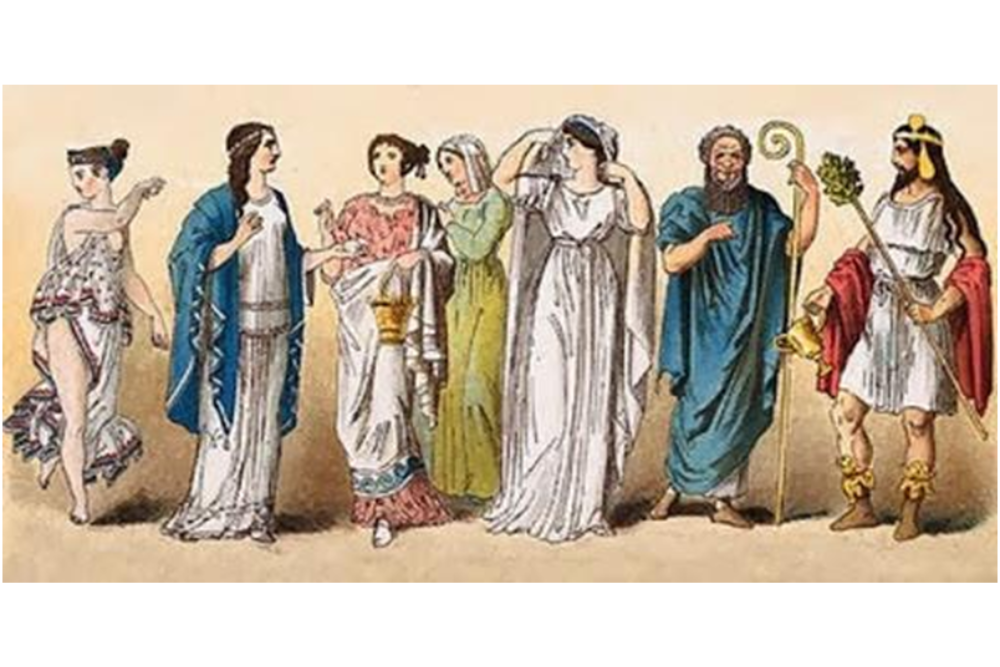Introduction
In the high-tech, hyper-evolved society of the year 3000, clothing is no longer just fabric. It’s living, adaptive, and intelligent. Despite humanity’s spread across planets and dimensions, designers of the future still look backward—to the wisdom, spirituality, and aesthetics of ancient civilizations. From Babylon to the Indus Valley, echoes of early cultures shape the fashion statements of the distant future.
- Egyptian Soulwear: Channeling the Divine
In 3000, Egyptian influence goes beyond pharaoh chic. People wear “soulwear”, garments designed to align energy centers much like the ancient Egyptians believed in ka (spirit) and ba (soul).
- Ankh-shaped light panels glow in tune with the wearer’s aura.
- Clothing integrates memory crystals engraved with hieroglyphics that tell personal or ancestral stories.
- Pyramid-core designs (with geometric symmetry) are used in armor, space uniforms, and political attire.
- Greco-Roman Revival: Philosophy Meets Form
The Romans and Greeks inspired more than democracy—their fashion becomes symbolic of intellect and power.
- Floating togas—held up by anti-gravity threads—are common in diplomatic circles.
- Adaptive sandals with AI that analyze terrain, referencing Roman soldiers’ versatile footwear.
- Philosophers wear cloaks encoded with logic puzzles and holograms of classic texts from Socrates to Cicero.
- Mesoamerican Majesty: Time, Cycles, and Color
In 3000, humans understand time not linearly but cyclically, just like the Maya and Aztecs did.
- Fashion pieces include orbital calendars embedded in jewelry that pulse with celestial alignment.
- Outfits shift colors in rhythms that mirror sun and moon phases—cosmic fashion meets cultural legacy.
- Feathers make a comeback, but now they’re bio-synthesized light-plumes, used in leadership and ritual garments.
- Ancient Chinese Elegance: Harmony in Motion
Drawing from Daoist principles, fashion in the style of ancient China is about balance and fluidity.
- Garments that move like water, adapting their texture and weight with emotional state.
- Patterns are built on Yin-Yang algorithms that shift dynamically with nearby energies.
- Ceremonial wear features digital calligraphy in motion, telling ancestral stories as the wearer walks.
- African Royal Influence: Lineage, Rhythm, and Royalty
From the gold of Mali to the intricate beadwork of the Zulu, African aesthetics define power and connectivity in 3000.
- Voice-activated fabrics that play ancestral rhythms or family histories in response to movement.
- Clothing made from memory-woven fiber, passed down through generations—preserving both story and status.
- Crown holograms based on Yoruba or Egyptian royalty activate in formal or ceremonial settings.
- Indus Valley & Mesopotamian Influence: Urban Fashion Gets Ancient
The earliest cities left their mark too.
- Fashion in megacities incorporates clay tablet textures, referencing Mesopotamian writing systems.
- Urban robes feature flowing lines inspired by river-based architecture and trade routes.
- Jewelry includes smart seals that identify clan, profession, and beliefs—like ancient signet rings or Indus stamp seals.
The Core Idea: Fashion as Time Travel
By 3000, fashion is a language across time, not just trend. Ancient civilizations give modern humans a sense of identity, ritual, and grounded purpose in a world where almost everything else is fluid, digital, or synthetic. In wearing the past, people of the future stay connected to what made us human to begin with.
Bottom of Form
